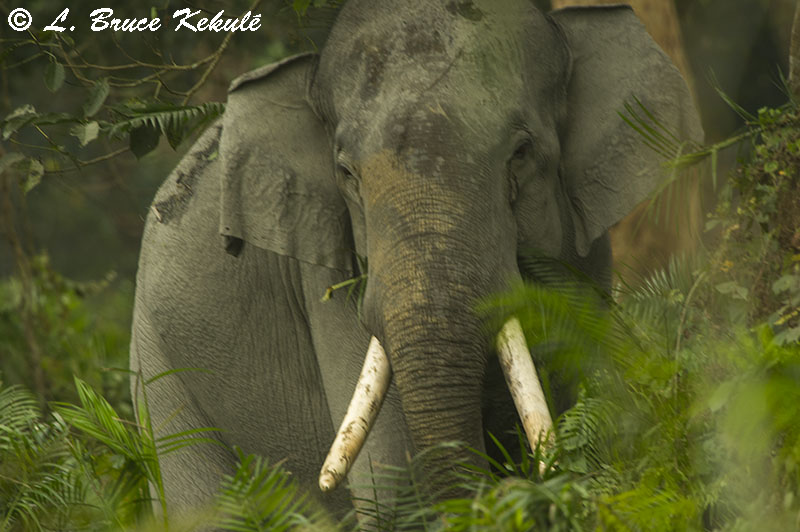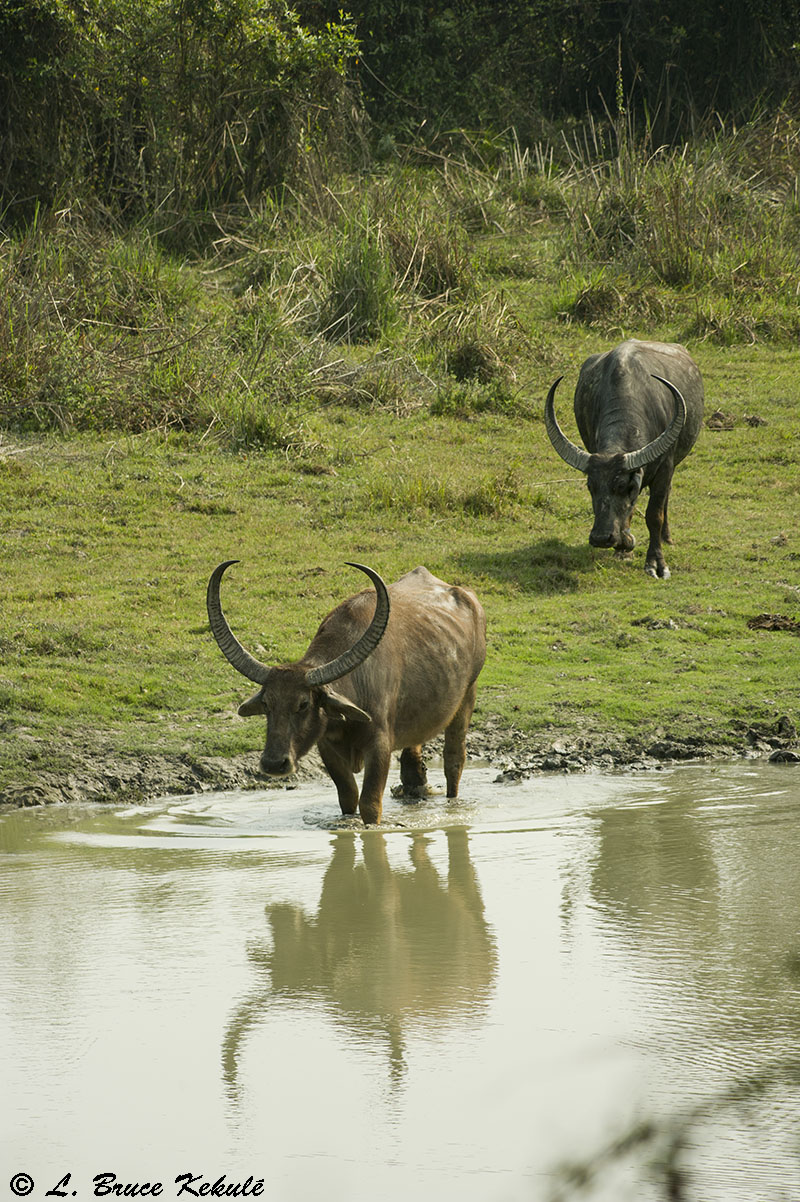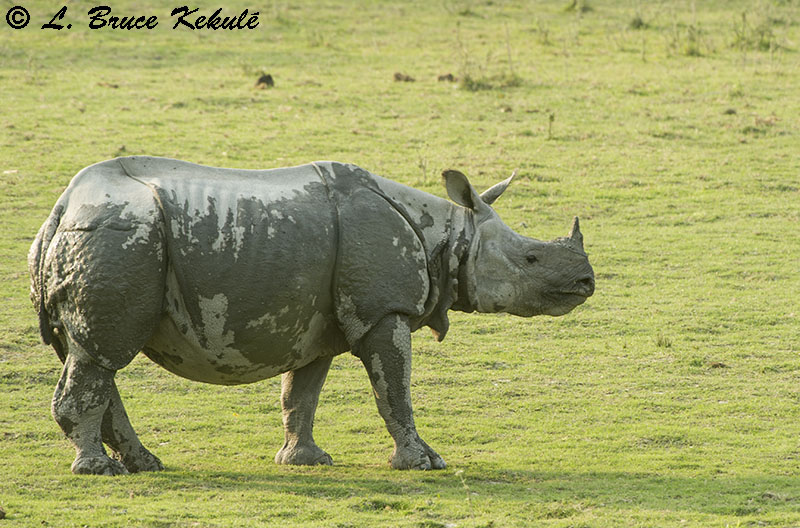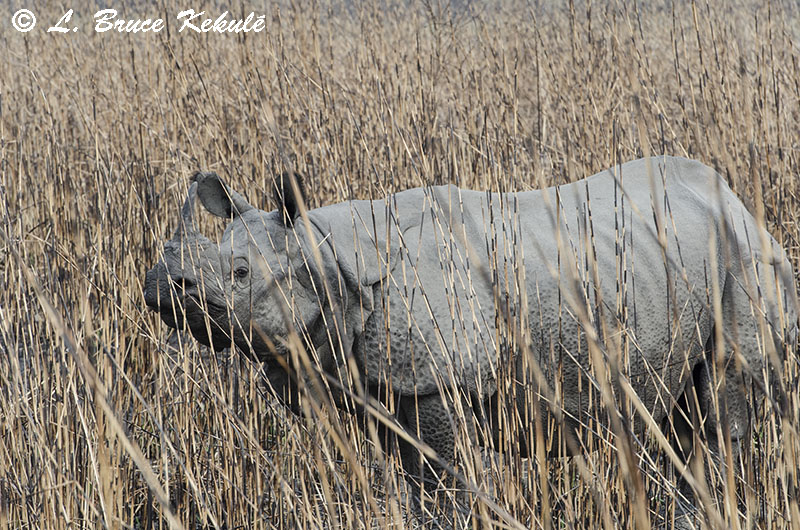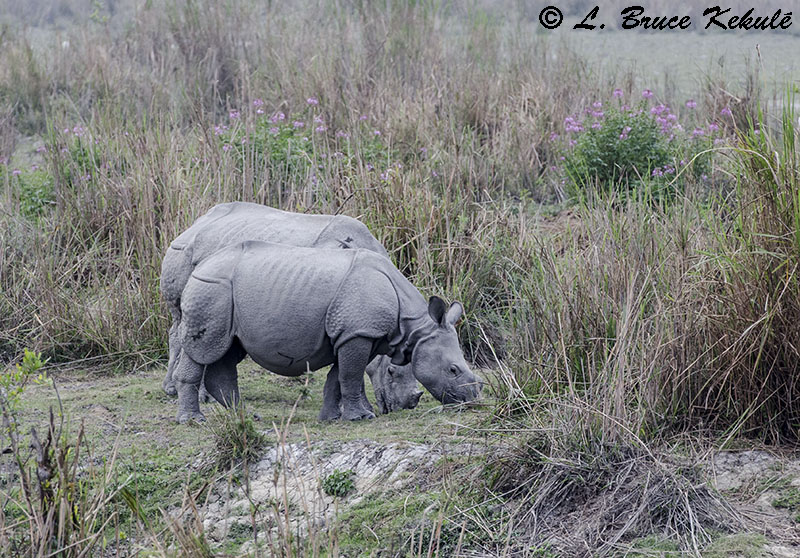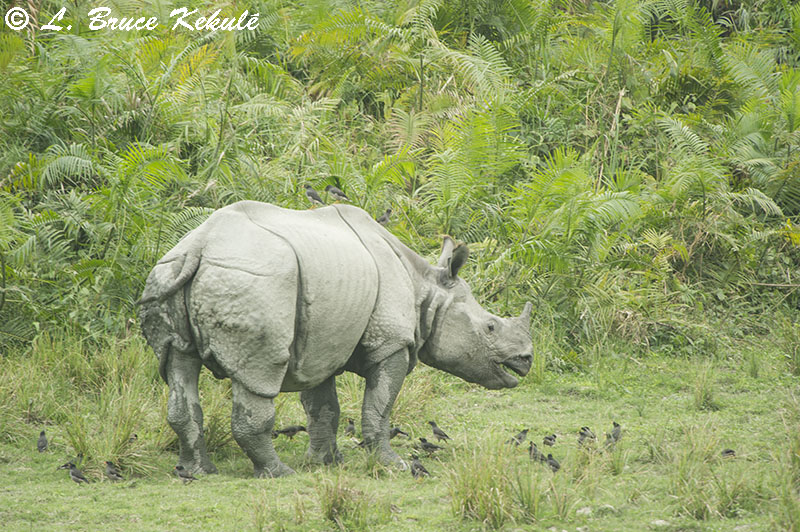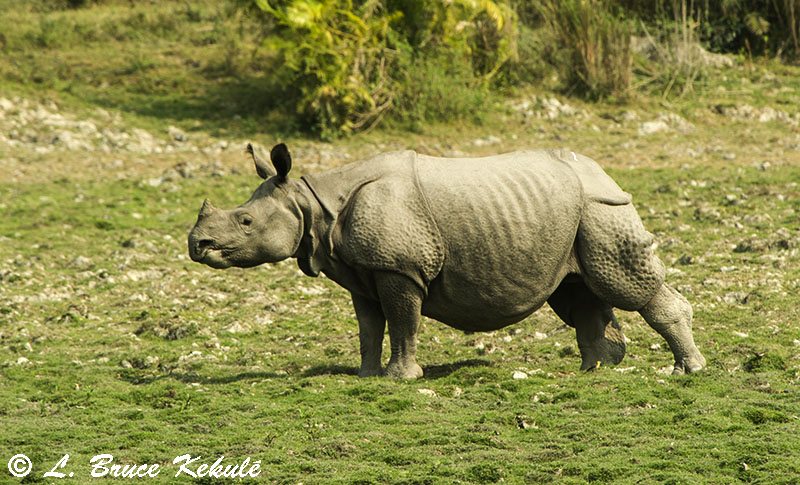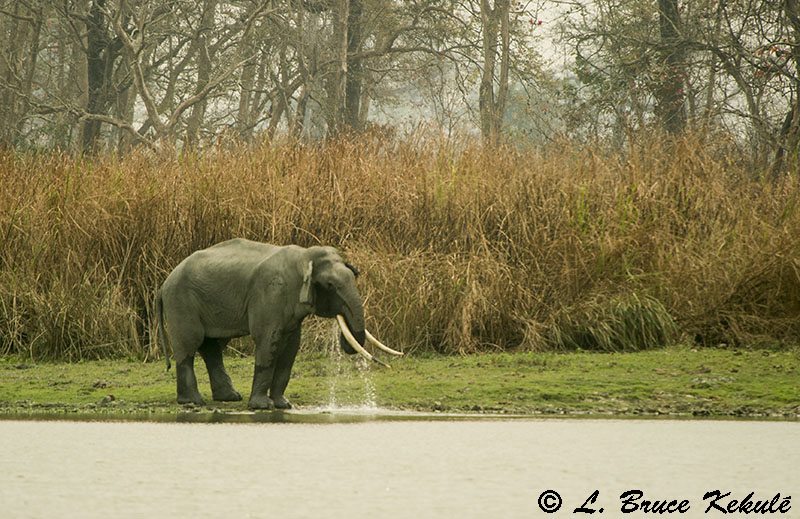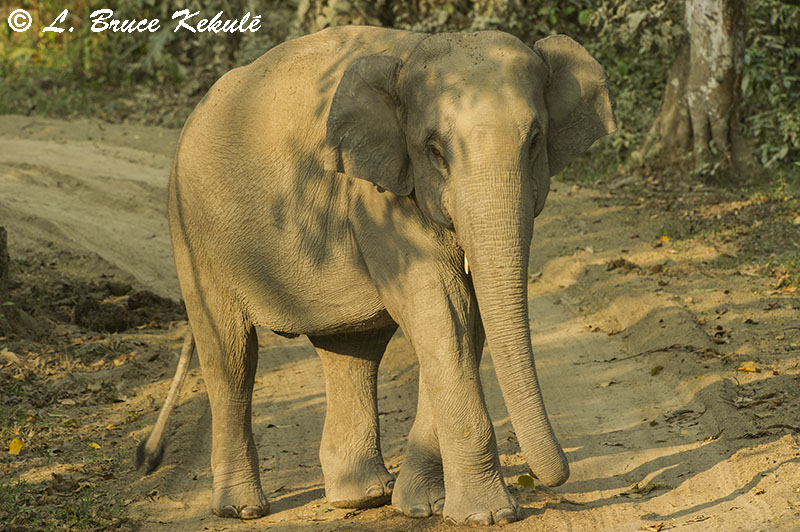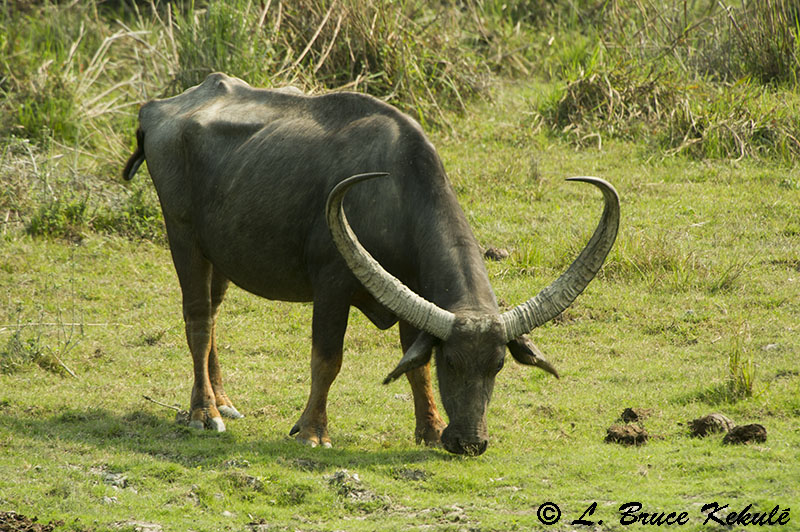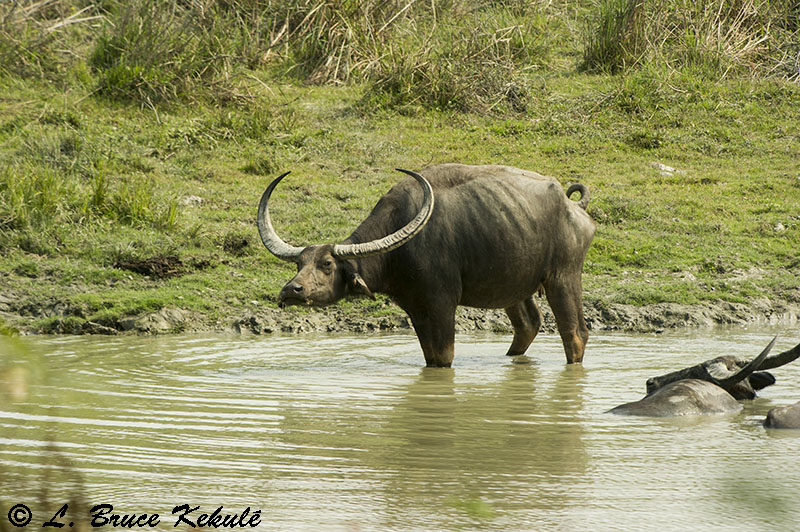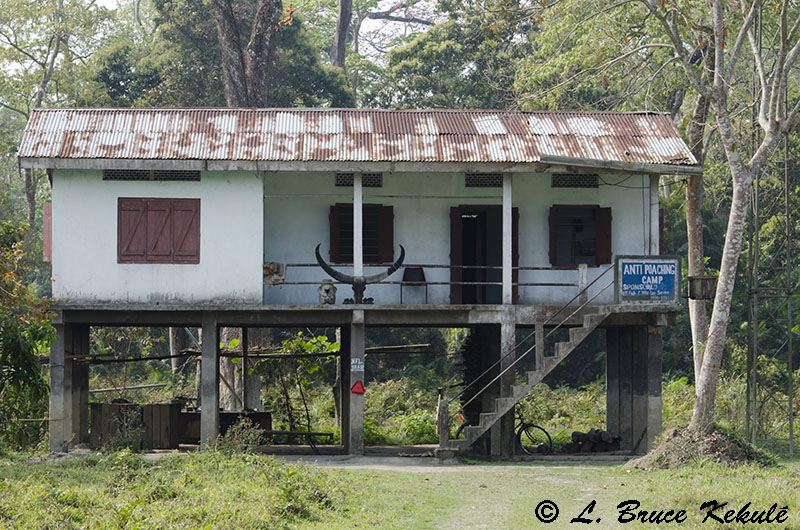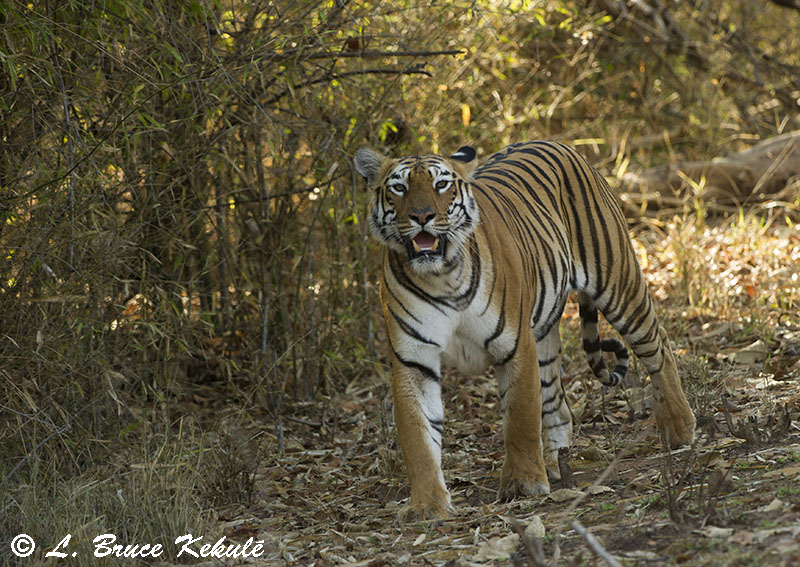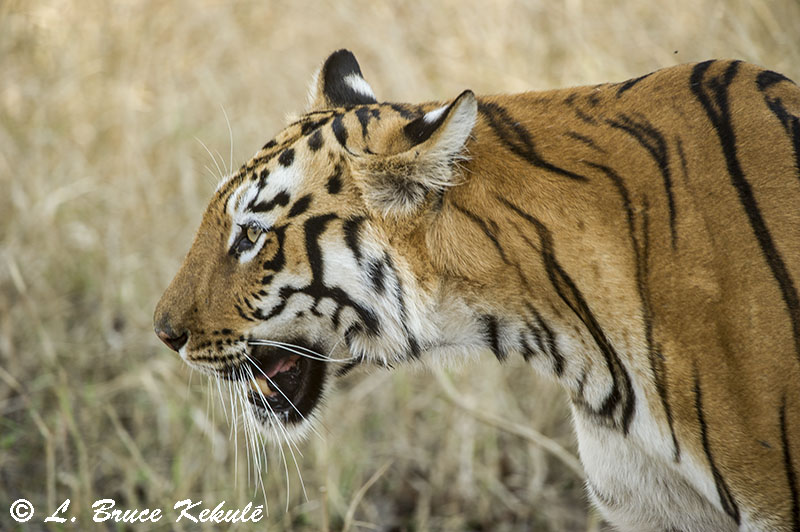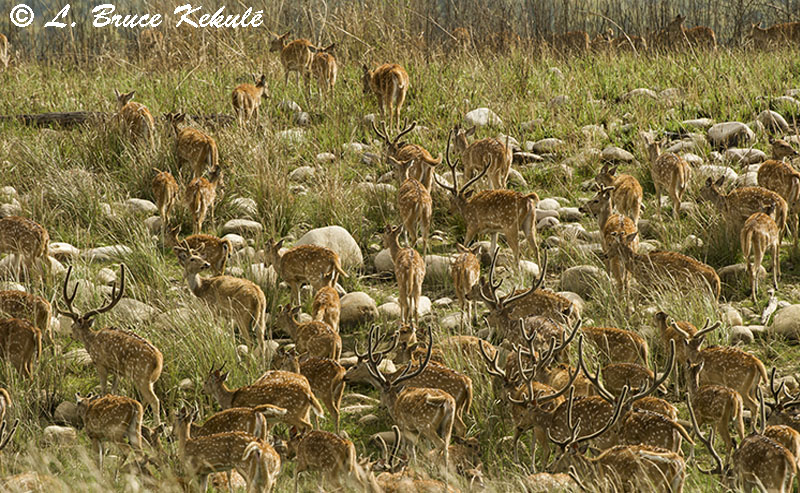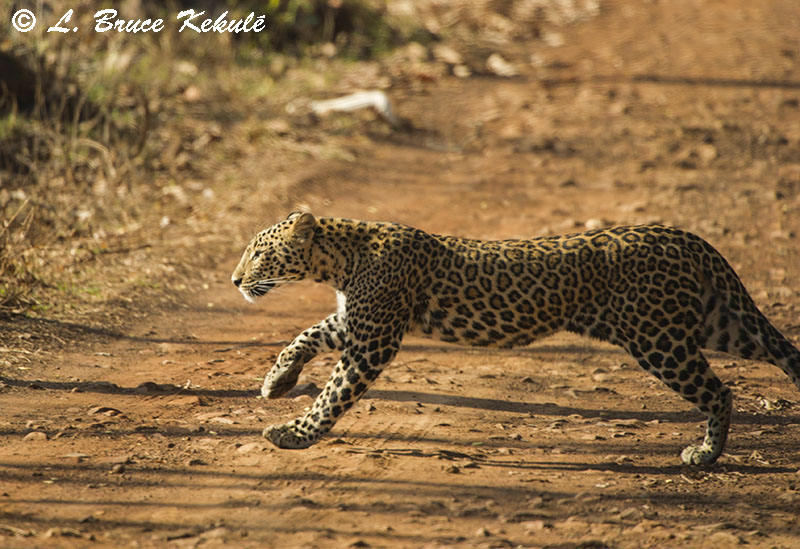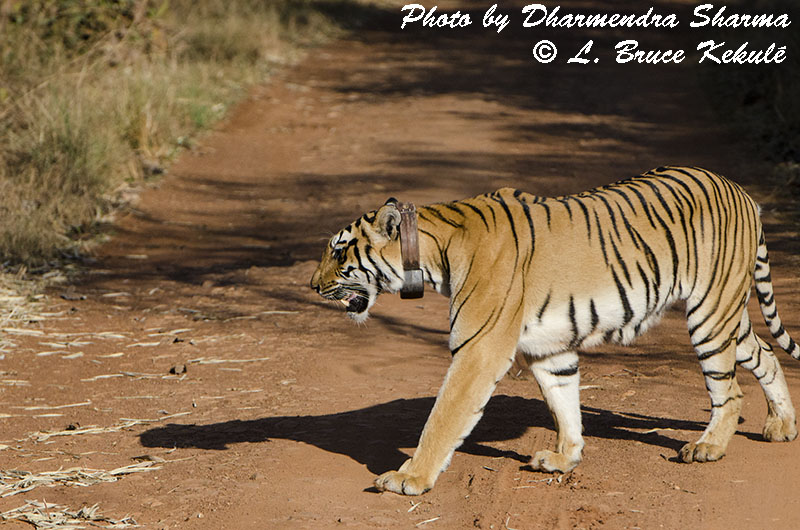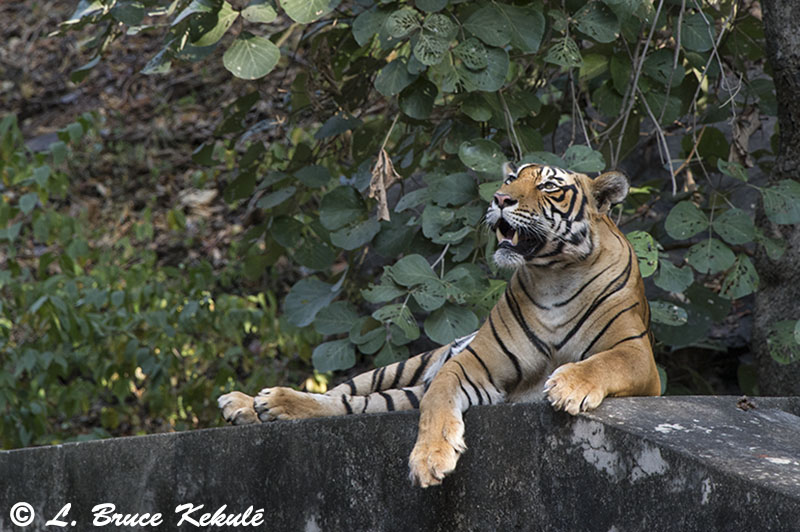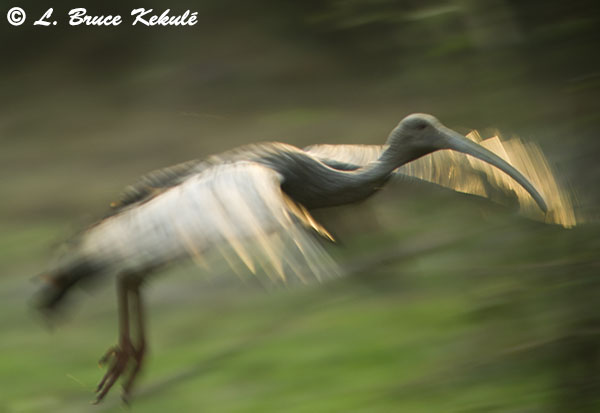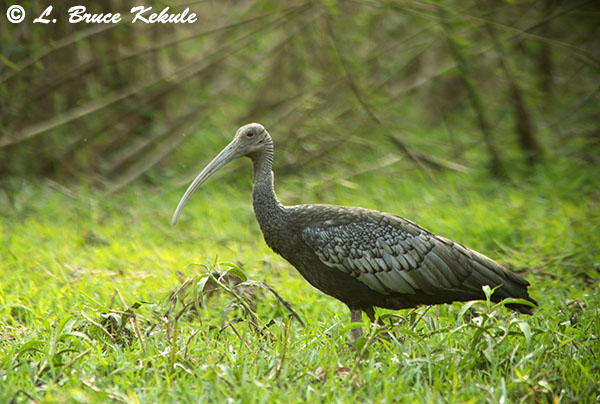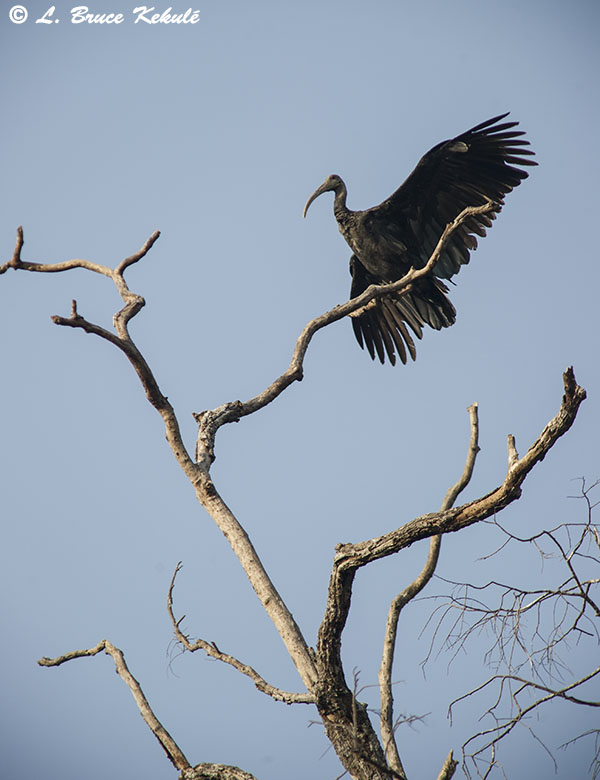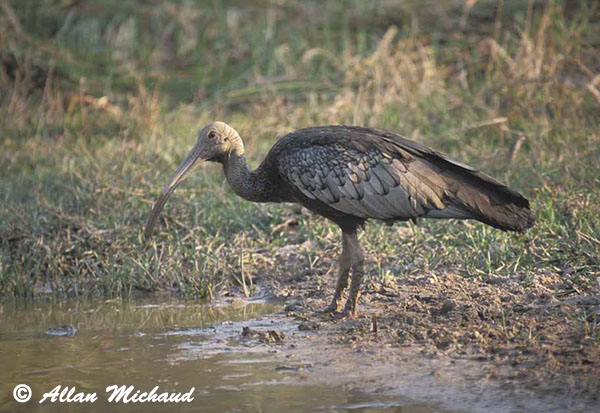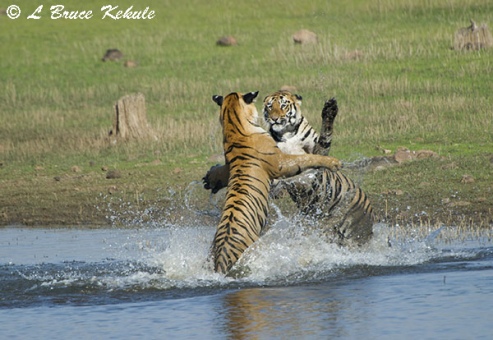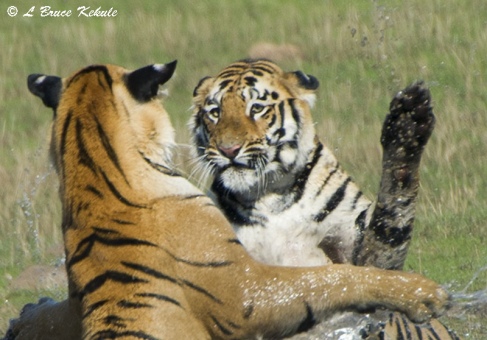Archive for the ‘Photography Abroad’ Category
An Apex-Predator straight from the Triassic Era
A Mugger Crocodile in Satpura Tiger Reserve.
A 4-meter mugger basking in the mid-morning sun – 10 minutes before the end of my finale safari…!
After almost 20 days of solid morning and afternoon safaris on hot dusty roads in India’s tiger reserves situated in the State of Madhya Pradesh, I decided to take a boat safari offered by the park authorities on my last safari at Satpura Tiger Reserve. Arriving around 7am at the boat dock, we jumped into a speedboat and then encountered many large water birds like grey heron and woolly-necked stork, plus many other species along the shoreline of Denwa Reservoir. Eventually, a mugger crocodile Crocodylus palustris was sighted but it quickly slipped into the lake.
As the morning got hotter and time was running out, another crocodile was seen but it too slid below. About 10 minutes before closing time as we were cruising back, a big crocodilian was seen in full bask mode with it’s mouth wide open bringing it’s body temperature up. A quick left and we closed the gap, and I did not stop shooting my Nikon D300s and 200-400 VR II on a tripod. It was about 4-meters long, and eventually got up and dropped off its little basking spot.
Lifting off from it’s favorite basking spot – a magnificent prehistoric creature of nature…!
I feel fortunate to have seen and photographed this prehistoric creature that evolved from the Triassic Era some 210 million years ago. In the lake, they are very shy for the most part. This is my top capture on my trip to the land of the tiger, and I will be posting more of all the other amazing creatures I photographed when time permits.
I would like to specially thank all my friends at the Denwa Backwater Escape and Pugdundee Safaris, plus the Forest Department at Satpura Tiger Reserve for all their help and support during my visit to this wonderful place..…!
The Good, the Bad and the Ugly: Ustad, the Indian tiger is jailed…!
Recently in Ranthambore National Park in India, was the center of controversy when a forest guard was killed by a big cat. Ustad or T-24 was blamed for the killing by the very ruthless, rich and powerful ‘hotel lobby’ just outside the park. T-24 had become shy of the large jeep hordes that invade the park everyday chasing after tigers. Many complaints that he was just too old, and a new younger tiger was needed to boost tourism and of course money. It is a conspiracy against wild tigers and one that is an ‘eye-sore’ to the country. Here is a short film showing the ‘Good, the Bad and the Ugly’ of tiger tourism in India…! Boycott Ranthambore until ‘Ustad’ is released back into the park and, his home and family…!
Kaziranga National Park and Tiger Reserve: The greatest protected area in the world
From a dozen great one-horned rhinos to over 2,400 individuals in just 80 years…!
Kaziranga, a UNESCO World Heritage Site is situated in the State of Assam in northeast India, and encompasses some 430 square kilometers of grasslands, wetlands and river habitat plus a buffer zone amounting to another 400 square kilometers. Over time, the Assamese have created the greatest protected area in the world.
A close-up of a rhino bull and a mynah birds looking for insects at sunset. There are
some 2,400 rhinos in Kaziranga making this place absolutely amazing in regards to
these creatures still thriving in the wild, and where one can actually see them.
A big tusker with nice ivory. There are some 1,000 elephants in the park and they
have also flourished because of the pristine habitat, food sources and great protection.
But they are also targeted by poachers but on a much lesser scale. It’s easy to see
them in all areas of Kaziranga as they go about their daily lives.
A pair of wild water buffalo cows at a waterhole. Along with the rhino and elephants,
these bovid have increased to 1,300 individuals. The Indian sub-species have the largest
horns of any creature in the world, and Kaziranga has the highest density of buffalo.
In most places, the African and Asian rhinos are in trouble and close to extinction, especially the Javan and Sumatran species. Rhinocerotidae have been on earth since the ‘Late Eocene or Early Oligocene’ (about 33 to 28.3 million years ago). Being odd-toed ungulates and herbivorous, they thrive in these grassland and wetlands that are supplied nutrients from the annual floods from the great Brahmaputra River.
This river flows from the Himalayas through the park in the northern section. This waterway is one of India’s main lifelines providing water to millions of people downstream along its entire length all the way to Bangladesh emptying into the Bay of Bengal. Annual floods bring nutrients to the land and the ecosystem is replenished.
Originally established as a reserve forest in 1908, Kaziranga was declared a sanctuary in 1916 to counter extensive poaching of the rhinoceros. In 1974, the Indian Government demarcated the present area as a national park. Then, in 2007, it was declared a tiger reserve under the Central Government’s ‘Project Tiger’ scheme.
Rhino gallery: Over four days, I photographed loads of these prehistoric looking
creatures in all three zones (West, Central and East)…! It was simply amazing…!
Eighty years ago, the rhino population was decimated to just a dozen or so beasts by poaching for their horn in demand by the Chinese and Vietnamese. The Assamese government decided to really put its foot down and instigated a policy to eradicate poachers using ‘extreme measures’ throughout the park, plus increasing the ranger force by several hundred percent.
The animal population immediately began to pick-up, and the last senses in 2014 estimated that some 2,400 rhino, 1,300 wild water buffalo and 1,000 elephant are thriving in this small park. Along with this, there are over 100 tigers that live here too and the park has one of the highest densities of the striped cat per square kilometer in the world. As a destination to see these majestic and iconic creatures, Kaziranga is the place to go.
Wild elephant gallery: I saw these herbivores every day and in all zones. There are over
1,000 of these giants in the park…!
The Assamese people are very proud of their heritage and the park is a ‘case study’ on how to actually save a species from extinction. All the large mammals propagate in safety and show the world; if you look after a place with a mandate to rid the protected area of poachers, animals will flourish. However, it turned into a small war and many people were actually killed including some rangers.
Even so in 2014, about 50 rhinos lost their horns and poachers killed three tigers. The battle continues and the government has done a brilliant job of saving nature with a tough mandate of ‘shoot to kill’ in order to protect this place.
It has worked so well that it is now possible to see rhino everyday, and just about everywhere, even outside the park. As I was leaving for the airport after four days on a recent safari in Feb. 2015, there were some cars parked by the side of the road and photographers had their cameras out taking images of a rhino a hundred meters from the tarmac.
Wild water buffalo gallery: There are more than 1,300 of these bovid and I saw them
everyday in all zones…! They have the largest horns in the animal kingdom….!
There are three zones (West, Central and East) that tourists are allowed to enter and it is scheduled by the lodge where you are staying on what areas one can visit. The Big Three (rhino, buffalo and elephants) can be seen in all areas. If you are lucky, a tiger may appear at any time. There are many bird species thriving and it is a bird watcher’s paradise.
The Park is home to more than 70 percent of the one-horned rhinoceros left in the world and harbors more than 60 percent of India’s wild water buffalo population along with the only population of Eastern swamp deer (or barasinga). Other important wildlife found are: gaur, leopard, fishing cat, large and small Indian civet, sambar, barking deer, hog deer, hog badger, Hoolock gibbon, capped langur, Assamese macaque, rhesus macaque, sloth bear, Gangetic dolphin and otter, etc.
A fresh tiger pug mark on the road in Kaziranga. I did not see a tiger here but got
a wonderful shot of a running tiger in the grassland of Corbett National Park
in northern India….!
From New Delhi, the flight to Guwhati in Assam takes about two hours and then it’s another four hours by taxi to the Infinity Lodge where I stayed situated close to the three Kaziranga park gates. There are many other hotels and lodges and one can find these on the Internet. There is also a bus service that passes the park. Traffic to the park is a bit hectic at certain times since it’s the main road in the northeast India to the next state of Nagaland, and on into Myanmar. It has been said that smugglers use this route for tiger bones and rhino horn to China.
Some of the rare birds thriving in Kaziranga: A female black stork identified by a
yellow iris near a waterhole; a Kalij pheasant in the forest; two bar-headed geese
in the wetlands, and a grey heron and pelican swimming in a pond….!
One thing for sure: the Forest Department here in Assam is one tough cookie. They have increased rangers to 700 men and women, and have 162 guard posts with 3-4 rangers living in each of these quarters. They do mainly foot patrols and are always armed with a least a rifle (mainly British .303s but some men have newer generation .315 Indian rifles that is lighter in weight than the old cumbersome English service arm) or sometimes 12 gauge shotguns. Some of the elite forest guards have assault rifles. While on any safari in Kaziranga, a forest guard with a rifle is mandatory in case of an emergency. The men do mostly foot patrols around their respective areas.
Kaziranga gallery: The park has seen some serious flooding and the most extreme levels
have been recorded shown here at a ranger station. Travel and viewing wildlife is normally
done in Maruti (Suzuki) type jeeps. Controlled burning of the grasslands carried out by the
Forest Department benefits the herbivores when new grass sprouts up….!
Needless to say, it is perfectly safe to travel in and around the park. An armed forest guard to ride ‘shotgun’ is mandatory and is picked up at the gate. For the most part, you’ll be able to see these beasts in a Maruti (Suzuki) safari type jeep called a ‘gypsy’. It is the best way to view wildlife and there are many operators at most of the lodges. The forest department also offers guided tours on an elephant-back to get up-close to the big beasts.
The best time to visit Kaziranga is from November to April. I used a Company named ‘Wilderness Uncut’ (wildernessuncut.com) for all my arrangements. Wildlife photographers Anu Marwah from New Delhi, and Jason Fernandes from Mumbai are co-owners and they organized everything to perfection. Their service is top-notch and I know who will arrange any future trips to India for me. Being wildlife photographers, they know what is needed for a successful trip.
That’s me with my naturalist Polash Borah, driver Mohammed Nekib Ali and a forest
ranger at a rest stop station early one morning during my recent safari.
I also had the pleasure of working with Polash Borah, my naturalist (17 years of experience in Kaziranga) and Mohammed Nekib Ali (10 years experience) my driver who also acts as a naturalist. We spent four days together and had a great time. They know exactly what are the best areas for viewing and photographing wildlife, and both work at the Infinity Lodge just outside the park.
May 1st is ‘World Rhino Day’ in India, and Kaziranga National Park and Tiger Reserve is the best place in the world to see these rare creatures up-close. If you are planning on visiting a protected area first hand and want to view Mother Nature’s giants, make arrangements to Assam; you won’t be disappointed…!
Travel Info:
From Thailand, one of the best airlines to travel to India is ‘Air India’ that has a daily flight leaving Bangkok around 8am and arriving in New Delhi at noon. Arriving in the daytime in Delhi is much better and safer than arriving after midnight like some of the other airlines do. A connecting flight on Indigo Airways to Guwhati in Assam is very good and takes about two hours. They are a budget airline and have several flights a day. I recommend these two carriers as being very reliable and reasonable in price. Give yourself at least three hours through the New Delhi domestic airport, as it is extremely busy and crowded. Finally, when flying a domestic airline, a maximum of 15 kilos for check-in baggage is the standard. Anything over that weight will be charged as excess.
India’s ‘Big Six’: Majestic creatures thriving on the sub-continent…!
A photographic tour in three national parks with some pretty amazing animals
A tigress on the run in the grassland at Dhikala, Corbett National Park in the northern State of Uttarakhand.
In 2014, I made a decision to visit India once again in search of the most iconic species still thriving in three protected areas in the northeast, central and northern parts of the country. Kaziranga, Tadoba and Corbett national parks and tiger reserves respectively, were chosen for their wildlife biodiversity with the tiger at the top of the list. I visited the three from February 22 through March 16, 2015.
A mature bull elephant with some impressive ivory in Kaziranga National Park.
I wanted to photograph the big six: elephant, rhino, gaur, wild water buffalo, leopard and the tiger. I was extremely lucky encountering all of these amazing animals during this trip. This has definitely left a huge impression on me and is etched in memory. India’s wildlife and protected areas are some of the best places in the world to see Mother Nature’s wonderful creatures.
Male One Horned Indian rhino 10 minutes from the front gate on my first day in Kaziranga National Park.
A century ago, India was teeming with wildlife. There were some 40,000 tigers found here but that number quickly dropped primarily due to habitat loss after World War II when the population really began to surge and forest areas were overcome, and turned into agriculture fields and estates. Hunting on a grand scale was also responsible for the disappearance of the tiger.
Wild water buffalo cow in Kaziranga National Park.
In 2011, there were only about 1,706 tigers left but in 2014 after better methodology and camera trapping, that number increased to 2,226 individuals found throughout the continent. As a result of mass awareness and conservation measures, the tiger population has rebounded showing a remarkable growth of 30% in the past three years. But some scientists believe this number to be inflated and put the amount of tigers around the 2,000 mark.
A bull gaur with an extremely long tongue in Tadoba National Park.
On 22nd of February 2015, I boarded Air India for the 4-hour flight from Bangkok to New Delhi arriving at noon. After a quick hair-raising taxi ride through the city, I got to the hotel spending one night to rest-up in order to catch the next morning’s flight to Gauhati, the largest city in the State of Assam in northeast India. The hustle and bustle through the domestic airport in Delhi is very tight on security as it should be. But once through the x-ray machines, a bit of a breather and a coffee is welcome. You must get there at least three hours early because of the amount of flights leaving, and the thousands of people trying to catch their respective connections.
A female leopard during late morning in Tadoba National Park.
Kaziranga National Park: State of Assam
A young bull elephant in Kaziranga National Park.
I wanted to visit Kaziranga National Park with the objective of finding out why this place is the number one protected area in the world, and my top priority was the Great Indian one-horned rhino, and then on my list was the wild water buffalo, elephant and tiger in that order. I got the big three but the tiger remained elusive.
A water buffalo photographed by my friend Polash Borah.
My newly acquired friends, Polash Borah and Mohammed Nekib Ali, my naturalist and driver respectively were a big help in locating these large mammals. I let Polash use my Nikon D7000 with a brand new Nikon 70-200mm VRII lens, and he got a really nice buffalo shot posted here. I also managed to get some good photographs myself. It was a great trip and I met some very nice people.
A young one-horned rhino up-close. He was a curious fellow wanting to know who we were.
I will be going back to Kaziranga maybe in November of this year when the skies are clear blue and the air is crisp wanting to get some nice scenic shots especially of the wide Brahmaputra River that runs through the park from the Himalayas in the background, and the lush swamps and grasslands after the monsoon rains.
A mature wild water buffalo bull near a waterway in Kaziranga National Park.
Probably the most important fact concerning Kaziranga is that some 80 years ago, there were about 12 rhinos left here. The Government of Assam decided to do something and implemented some serious laws with a ‘shoot-to-kill’ policy on all poachers and illegal squatters, plus an increase of several hundred personnel. At last count, there are 700 rangers and 161 ranger stations to look after a small 430 square kilometer core area, and a 400 square kilometer buffer zone. After a census last year, there are over 2,400 rhino, 1,500 wild water buffalo and 1,200 elephant. Over 120 tiger have been recorded here and prey species also number in the thousands. In my opinion, it is probably the best-protected area in the world…!
Tadoba National Park: State of Maharashtra
A tiger named ‘Maya’ in Tadoba National Park; she is the most famous tigress seen almost everyday.
After four days in Assam, I flew back to New Delhi for a two-day rest and then boarded a flight on March 3 in the morning down to Nagpur further south. Then a two-hour taxi ride was needed to Tadoba National Park and tiger reserve in the State of Maharashtra. Arriving at the lodge in mid-afternoon, a needed rest and some lunch was in order. I did not go out on safari that afternoon because the park is closed on this day.
‘Maya’ up-close as she walked the road marking her territory.
The next morning’s safari netted a beautiful female leopard highlighted by some wonderful back-light. My spirits were up a hundred percent after photographing the spotted cat.
Female leopard jumping in front of our jeep.
Female leopard up-close as she checks her surroundings.
The next morning as we were rolling around the dusty roads, we bumped into a big crowd of jeeps but they were at the far-end of a one-way road. We waited and saw a tiger walk out of the forest near the jeeps but melted back in. The group then moved close to us but the tiger stayed in the forest. My driver Lahu from the Tiger Trails Lodge has been driving for the owner of the lodge for some 35 years, and knew exactly where the big cat would come out. And as sure as the sun comes up everyday, she popped out and walked right in front of us.
‘Maya’, the female tiger queen in Tadoba National Park: This was my last sighting of this beautiful cat.
I did not stop shooting as Maya, (probably the most popular tigress in Tadoba at the moment) walked along the road spraying and marking her territory. My new friend Dr Sundran Rajendra was with me, and the both of us were so elated that we just kept on shooting our cameras. Then time was up and we had to leave the beautiful cat to herself. It was Sundran’s first tiger and he managed to get some very nice shots of the big cat. She came so close I could almost touch her.
Another tigress, named ‘Choti Tara’ fitted with a radio collar snarls at my friend Dharmendra Sharma.
My other friend and naturalist with the lodge Dharmendra Sharma, was in another jeep so I let him use my Nikon D7000 and the new Nikon 70-200mm VR II, and he got some very nice photos of another female named ‘Choti Tara’ fitted with a radio collar. He also got a few nice shots of Maya.
Male tiger named ‘Gabbar’ fitted with a ‘radio collar’ in pretty bad shape.
On my last afternoon safari in Tadoba, I bumped into ‘Gabbar’, a male tiger also fitted with a collar. He got swatted by another male and was in pretty bad shape. But the wheels are in motion to fix him up. I just hope that the squeaky Indian bureaucracy does not wait too long to help this tiger, as he could turn into a cattle killer or even worse, a man-eater. Needless to say, news on Facebook is that he did kill a village buffalo but is OK for the moment, and is being monitored. After four days, I was back on the plane to New Delhi for a two-day rest before heading north to India’s first national park.
Corbett National Park: State of Uttarakhand
A young tigress stalking a herd of spotted deer in the grassland of Corbett National Park.
It takes about four to five hours north of Delhi by taxi through some very congested and dangerous traffic in the State of Uttar Pradesh to get to Ramnagar, a city in the State of Uttarakhand where Corbett National Park, India’s first national Park. It is situated in the foothills of the great Himalayas. I spent the first night at the Forest Department’s lodge at Bijrani, and went on safari that afternoon and then again the next morning.
A golden jackal on the run near the Forest Department’s lodge at Bijrani.
I did not see a tiger but the big cats were around as other jeeps that I bumped into got some nice close-up photos taken with an iPhone. An occupant in one of the vehicles gave me a telephone slide show. I did see a pair of golden jackals early in the morning and then later a small family unit of elephants. One old cow did a mock charge and came within 15 meters but stopped short and turned around going back to her calf. The elephants then faded off into the forest.
Elephants near the Forest Department lodge at Bijrani.
Around 12-noon, we left this section and went over to the Forest Lodge at Dhikala that is the best site in Corbett to see tigers. Near the lodge, there is a grassland savannah that attracts herbivores like spotted deer in great numbers, and of course many tigers come looking for prey. It is said the park has some 200 tigers, one of the highest densities in India.
A herd of more than 100 spotted deer; the prime food source for tigers in Corbett National Park.
On the second morning, we bumped into a young hunting tigress stalking a herd of over a hundred deer. Me, my naturalist Devendra Singh Neui and my driver Rasheed Ali, were the only ones at this location as all the other jeeps from the lodge (about 10 of them) were waiting for tigers by the forest road. She tried several times unsuccessfully to chase down a deer but the herbivores were on to her. I managed to get some really great images in the process.
The tigress on the run after spotted deer not far from the Forest Department’s lodge at Dhikala.
Later in the afternoon, the camp was abuzz with the news that a tiger was in the lower grassland, and after lunch, they all headed that way and waited nearby. When she appeared, the group went wild chasing after her but they all came up short. We hung back and this very smart tiger circled around to avoid them. I saw her one more time slinking in the grass as the light was fading but time was up as I snapped a few last frames. I had a great time here and have vowed to return to this remarkable place…!
The unlucky tiger chasers in the grassland of Dhikala, Corbett National Park.
The trip to Corbett was scheduled on very short notice by my agents Anu Marwah in New Delhi, and Jason Fernandes in Mumbai both wildlife photographers of great standing in India. They are joint owners of Wilderness Uncut (wildernessuncut.com), a company set-up to cater to wildlife photographers, naturalists and bird watchers. Their superb management and arrangements are first class with absolutely no hiccups and they are reasonable priced. It was a great, enjoyable and memorable trip for me. I can honestly say that I need look no further for anyone to help me with any of my up-coming trips to India.
The female tiger in the grassland of Corbett: this was my last sighting of this beautiful tigress.
One point that I must make here! You never get tired of seeing the world’s biggest cat and is one of the greatest predators that ever walked the face of the Earth. My thoughts are always with these felines and their future survival. Unfortunately, the future for the tiger looks dim, as the situation concerning the Asian medicine trade using their bones seems to be getting worse with more and more stories on the net and in the papers about this draconian belief. The biggest culprits are China, Vietnam, Laos and Thailand (Chinese in Thailand) that perpetuate this market. The tiger needs the whole world to stand up to these people and this illicit trade must be stamped out soon but it carries on with impunity. Until action is taken with economic sanctions and other means against the countries involved, this illegal black-market will continue to take the wild tiger into the dark depths of extinction.
A rare Asian leopard sighting…!
The big cat makes a surprise appearance in India
In 2013, I visited Tadoba Tiger Reserve and national park in the State of Maharashtra, Central India, and spent nine days chasing after tigers with my good friend Luke Stokes from England but who also lives in Thailand like me. We saw seven tigers in nine days that was just awesome for our first trip to the ‘Land of the Tiger’. But the leopard stayed elusive and we did not even get a glimpse of the smaller big cat.
Female posing for me very close to the road – my favorite shot…!
Last year I decided to return to Tadoba once more in March 2015 but had to make bookings way in advance to guarantee a slot. Plans were drawn up, the lodge was selected, dates were locked in and fees were sent. Unfortunately Luke was not able to make this trip with me due to other commitments so I had to go it alone this time. But after a trip to two other Indian tiger reserves in November 2014, I have now become familiar with travel in India that is hectic but has now become almost second nature learning the ropes and system of chaotic India.
Jumping across the road in front of us…!
The flight from New Delhi to Nagpur (the closest city to Tadoba) further south takes about one and half hours and is pretty straightforward. The crowds and security at the airport are tight in Delhi with loads of flights leaving first thing in the morning. I arrived safe and sound to a waiting taxi for the three-hour drive southwest to the lodge just outside the park gate about noon. After some lunch, I rested up and got my cameras ready for the next morning’s safari first thing at 6am.
She is winking at us…!
After a quick coffee and some toast, I jumped into the jeep with a driver and a new acquired friend named Sundran Rajendra, an Indian guy born in Malaysia, brought up in Australia, and now from London. We become immediate friends so at least I had a companion. This was his first trip to India but he was a season traveler having been to Africa many times. We arrived at the gate in five minutes and after paying a small fee for our cameras, moved into the protected area in the dark with a forest guard in tow. The sun began to rise and light filled the forest as we spotted deer and peafowl and other birds just waking up. I was all pumped up but the morning dragged on a bit as we plugged along.
Got her eyes on us now…!
All of a sudden, a leopard was sighted disappearing into the bush. At first I thought that would be it but the driver has worked here for some 35 years and knew what to do. He skillfully moved along the road and stopped ahead of where the leopard might appear. And as sure as the day is long, she moved out of the forest in front of us, hesitated and then jumped across the road disappearing once again. I took a few shots and then we moved once more but this time near a deer kill the mature female had made earlier that morning. She had been chased off by the arrival of several jeeps.
Her final pose before slinking off into the bush – another favorite…!
Once again the driver moved forward and then we waited once again. And like magic, she appeared a third time right in front of us. I did not stop shooting until she left being spooked by too many jeeps arriving. The light became harsh and we had run out of time as the Forest Department has strict rules that must be followed to avoid being fined. Later that morning when the jeeps and everyone had gone, she came back and took the deer kill into the forest for a meal. Sundran and I cheered and jumped up and down celebrating our luck at a rare sighting of an elusive cat. It certainly made our day…! The next morning, we bumped into a female tiger up-close but that is another story to be posted at a later date…Enjoy…!
‘Gabbar’ – A male tiger in Tadoba Andhari National Park
In 1975, a very famous Indian ‘Bollywood’ film was produced named ‘Sholay’, a Hindi action-adventure film that follows two criminals named Veeru and Jai who were hired by a local policeman to chase after a villain named ‘Gabbar’ in the southern state of Karnataka. This classic award winning film is ranked in the ‘Top 10 Indian Films’ of all time. I have not seen the film but will have a look one day soon..!
“Gabbar’ – male tiger with a ‘radio collar’ and severely injured in a small pond near the main road in the park…!
However, this story is not about a villain, but a beautiful mature male tiger named ‘Gabbar’ (also known as ‘Sherkhan’ or ‘T-7’) in Tadoba Tiger Reserve in the State of Maharashtra. In December 2014, he was tranquilized and then fitted with a radio collar to track his whereabouts and behavior by researchers from the ‘Wildlife Institute of India’.
Recently, ‘Gabber’ got into a fight with another male in the park that was witnessed by many on-lookers and severely injured. I have heard from a reliable source that he was in numerous fights with a bigger male and was swiped across the muzzle after the collar was fitted. It is without doubt that collars on male tigers or leopards hamper and prevent them from proper breeding, and they usually lose out to stronger cats without the heavy tightly fitted collar. It is quite possible that he is unable to hunt large animals now and may not survive into the near future…!
A close-up showing his injuries – what a sad looking sight…!
On my last safari during late afternoon in Tadoba on March 9th-2015, I bumped into ‘Gabbar’ lying in a pool sleeping not more than 100 meters from the main road. I stayed there observing him for more than an hour about 50 meters away. He eventually lifted his head very slowly and sadly looked up at me in the jeep. I was using my Nikon D3s and a 200-400mm VR II attached with a 2X tele-converter to get a close-up shot of him. I was devastated to see the extent of his wounds and it looks like he is very sick with fever probably from infection.
If any of those researchers who are responsible for this tiger read this; you must (should) get in there and re-capture him immediately, and remove the collar and treat his wounds if you have any compassion for wildlife. He looked very sick and may not survive this ordeal. Please do not hesitate, as his death would certainly be on your hands in the name of science. Data gathered by these people is not worth the demises of even one tiger; they are now too rare in the wild for this collaring practice to continue with any real outcome in the field of wildlife conservation, or protection and enforcement of the protected area.
‘Choti Tara’ female on the road in late morning…!
Furthermore, there is another female named ‘Choti Tara’ also fitted with a collar in Tadoba in December 2014. It was observed by some people at the lodge I was staying at that a researcher with an antenna following the female gave pertinent information to some drivers where she was going. A group of some 20 jeeps then rushed off in a cloud of dust to wait for her to reappear at the other side of the forest. This is total madness and certainly will give the researchers and park a bad name, and must be stopped now…!
I feel that the ‘Spirits of the Forest’ let me photograph ‘Gabbar’ to reveal the serious situation he is in. I’m hoping that a concerted effort will be undertaken to save this magnificent cat from bereavement, and maybe I played a small roll in his continued survival. He certainly deserves more respect than what he is getting at the moment, and the trauma he is going through needlessly. To the ‘Wildlife Institute of India’ and the Forest Department of Tadoba: PLEASE ACT NOW BEFORE IT IS TOO LATE..!
Check this tale out: https://www.facebook.com/notes/joydip-kundu/radio-collar-kills-sunderbans-tigress-toi/10153121234347207?pnref=story
Happy New Year 2015
Tiger, tiger burning bright…!
A visit to Ranthambore and Bandhavgarh national parks and tiger reserves in India
Sultan the Great of Ranthambore National Park and Tiger Reserve: My favorite shot as he was looking right at me….!
Several months ago, I found someone on Facebook offering a ‘workshop tour’ to some of India’s most famous tiger reserves. At first I was hesitant but after he discounted the trip a $1000 thinking he had assembled a fair sized group, I decided to take the plunge. By that time I had looked at his website and he has some nice images of birds and other animals from around the world. I thought he was a professional. The schedule looked good and we were going to visit three parks over the course of two weeks.
He will be referred to as ‘Mr. Workshop’ from now on. I sent an email to him in Eastern Canada and it was a go. Funds were sent and everything went good for a while. Then the funny email came that he had switched tour companies in India, and some of the schedule and hotels had also been changed. We were now doing only two parks but the overall timeline had not been altered. He also needed another $500 claiming a miscalculation. It then became a worry…! Was this a scam I asked myself…?
I called him and he seemed OK so we were still on. I got a visa to India that was difficult but finally approved by the Indian Embassy in Bangkok a week before departure. I boarded Air India to New Delhi and landed at noon on November 4th just last month. Immigration and customs was pretty straightforward and my luggage arrived in one piece.
‘Ustad’, my first tiger in Ranthambore walking in the forest by the road….!
Mr. Workshop was suppose to meet me at the airport but was no-where to be seen. I opened my laptop looking for the hotel address and got a prepaid taxi (no A/C) for a hell-bent-for-leather horn-blasting ride through the city, and finally arrived only to find out he was at a sister hotel on the far side of town. The thought of scam raced through my brain again…!
So I jumped in another taxi and eventually arrived at the other hotel. He was with a senior lady bird-watching friend from New York and she had gone to Costa Rica with him on a bird tour. So it was only the three of us…! We had dinner, and I hit the sack and crashed after all the crazy mind-blowing travel through Delhi. We were all set to leave first thing the next morning at 6am to beat the traffic out of the city.
After a quick cup of coffee and some breakfast, we departed for the first leg of the tour. We had a nice medium sized car with A/C and a driver with some English skills. It was a six-hour taxi ride south to the hectic town of Sawai Madhopur, close to Ranthambore tiger reserve in northwest India.
‘Ustad’ stopping for some claw scratching….!
We got to the hotel (Ranthambore Regency) at lunchtime and then the news came that only two rooms were available, and I would have to bunk with a stranger. I was not happy but refrained from making any trouble as we had just begun the safari so I reluctantly agreed. I knew it would be uncomfortable and it certainly was going to be a problem down the road but decided to ride it out. He is actually a skim-artist ordering only two rooms from the agent as I found out later…! He took it for granted that it would be OK for him to bunk with me as if we were buddies. I would of course regret that decision.
In the afternoon, we went out on our first ‘game drive’. By then I was all pumped up to see a tiger in the wild. We were in prime big cat habitat. However, the ride to the park entrance was an eye-opener. It is absolute chaos going through any market place in India with people, cars, pollution and rubbish everywhere, plus cows, pigs and camels all over the place, and horn blowing like I have never heard in my entire life.
Even my first trip to India in 2013 was not this bad. I was dumb-founded and did not think I would survive this marketplace again. Close calls and near misses on the road were frequent. We finally got to the gate and entered the reserve. A hat, facemask and sunglasses are a must when traveling through most sections of rural India…!
Ustad close by but very calm around the jeep hordes….!
Day one was absolutely the roughest off-road ride I have had in a long time and I got bounced all over the back seat of a small Suzuki-Maruti jeep (called ‘Gypsy’ in India). We saw loads of prey species like sambar deer, spotted deer, Nilgai (blue bull) antelope plus peafowl, monkeys and many other denizens of the Indian forest but no tiger.
Up at dawn for the first of two drives a day (one in the morning and one in a afternoon). Day two was even rougher as we traveled to another zone up to the top of a mountain. After two days, still no sign of a tiger. I was beginning to wonder if we would see one at all as there were quite a lot of tourists and jeeps about.
But day three was magic as we bumped into a huge male tiger first thing in the morning walking parallel to the road. When you see a tiger in the wild some 20 meters away, you then realize how big these cats really are. We followed him for a while before he disappeared into the bush but reappeared further down the road again for some more shots. It was absolutely great seeing and photographing this iconic apex predator.
Noor’s tiger cub hidden in the bush…!
We then moved to another area where we found loads of jeeps huddled around another tiger named Noor plus two cubs but we could not get close enough for any real good shots as it was packed solid. I did manage to get a couple quick images of a cub and Noor a little later on when she went out hunting leaving the young ones hidden in the grass. We had seen and photographed three tigers in the wild during the morning drive. The afternoon was quiet again. That evening, I had a few beers in celebration.
Day four was the same drill: up at dawn but was less hectic getting into the park as we took another route. Up into the forest we went and ended up in a canyon bumping into Sultan sleeping on a ‘weir’ (concrete check dam). The driver was an expert and got us into a great position directly across from the big cat at eye-level. Mr. Workshop refused to photograph this tiger lying on the concrete saying it was unnatural.
There are stone and concrete structures all over Ranthambore and some date back centuries that have become part of the habitat for so long that tigers use them all the time to rest up and hang out. I began to question his mentality and logic. Come this far after a tiger and complain about the backdrop.
Noor looking after two cubs out hunting in mid-morning….!
I used two cameras on this trip: a Nikon D300s with a Tamron 70-200mm ƒ2.8 lens for my offhand camera, and a Nikon D3s and a Nikon 200-400mm ƒ4 VRII telephoto lens plus a 1.7 converter (for 340-680mm) as my main rig, and used it in conjunction with a Gitzo lightweight ‘Traveler’ graphite tripod and Wemberley gimbal head. I was able to lock onto the sleeping feline without any strain, and be instantly ready for any behavior and movement.
After an hour, Sultan finally woke up and I did not stop shooting. By that time, some 40-50 vehicles had showed up with at least three hundred people behind us and it was complete madness with almost everyone talking at once and jeeps crashing into each other jockeying for position. Everyone wanted to see him. He is probably the most famous tiger in the park now.
On day five, we were lucky to get the same zone again and headed straight back up the canyon. ‘Sultan’ was sleeping close to a water hole and the road, and we got within six meters of him. I went after the close-up head shots and got some really amazing images of this three and half year old mature tiger. He then got up and we moved in further, and he came and flopped down in front of us. It certainly made me very happy. Lady luck was on my side.
Sultan resting on a weir (check dam)….!
In late afternoon that same day as we were traveling by the lake going back to the lodge, we bumped into a large group of trucks and jeeps that had gathered by some tall elephant grass with everyone pointing at something moving in the bush. We moved closer and by sheer luck, Krisha, female tiger stepped out to the left of us. She then moved behind and crossed the road. The driver went into reverse and got us in front of her. I managed to get some very nice head-on shots with a beautiful back-lit scene. Another tiger was in the bag making it five separate sightings. My spirits were high as we returned to the hotel.
However, Mr. Workshop started to get annoying wanting only two things: to photograph tigers and kingfishers. I thought this odd as this trip was meant to be a workshop (as he called it) and I thought we would photograph everything wild but this was not to be the case. His promise that the clients had first priority in the beginning of this tour quickly went out the window. I did not say much and just clammed up deciding to be quiet but the ill feeling continued. I concentrated on getting as many images as possible.
Up from his slumber….!
Day-six and seven was quiet with no more tiger sightings other then some pug marks here and there, plus the usual deer, antelope and birds. It was like we were winding down after all the tiger excitement. We left the hotel that evening and arrived at the train station for the great ‘Indian’ 12-hour train-ride further south that went throughout the night. We were assigned to three sleeper-bunks but I felt extremely uneasy after hearing many stories from friends about train rides in India. But we arrived safe and sound the next morning at Jaibalpur and were met by a designated taxi driver at the train station.
Checking his surroundings….!
The ride to Bandhavgarh National Park and Tiger Reserve took about three and half hours to the hotel (King’s Lodge). During the ride, I decided that I would not be bunking with Mr. Workshop anymore and that he could bunk with his birder friend but that brought out a shriek of terror from her. So I told him to find his own room. It looked like he had been slam-dunked, or an ice bucket put over his head.
Sultan yawning showing his canines…!
We stayed there for four more days and I kept my distance during breakfast and dinner, and we hardly talked at all while in the jeep. He was ticked off that he now had to fork-out cash (mine) for a room. I was totally disgusted with his behavior and I figured no more dialog was the best remedy. He was also extremely rude and showed his arrogant attitude towards anything he did not like or care about.
Unfortunately, we did not see any tigers in Bandhavgarh but there were many pug marks in the dust on the roads telling me the big cats were mainly nocturnal here and would disappear into the bush at first light and come back out at dusk. Poaching pressure was probably the main problem.
Sultan just six-meters away the next morning….!
A natural occurrence also happened last year when a male tiger killed three females to bring them into estrus (breeding) plus all their cubs had been killed. It was a blow to the park but just part of natural selection. After talking to some English wildlife photographers that had been coming since 2008, they said this year was way down on sightings and photographs from previous years.
The only neat thing for me at Bandhavgarh was the fact that I got some great camera trap videos of two ‘jungle cats’ coming to some chicken bait behind my lodge where I set a Bushnell Trophy Cam. These cats have become rare throughout their range and it was neat seeing them. I will be sharing these videos with the naturalists at the hotel so they are aware that these rare cats live there.
Sultan looking ‘straight down the barrel’…My last sighting of this magnificent cat….!
The thing that struck a wrong cord with me about Mr. Workshop was his claim to be a professional photographer. He brought his lens to the jeep in a roll-on bag made for an airline overhead bin to fit a long lens, and he would get dust all over the camera while in the jeep and then just put it back into his bag at the end of every safari. He also would sometimes leave the zip undone and dust poured in during travel around the dirt roads in the park. He complained about the focusing ring being stiff. He also used his shirt to clean his lens.
I brought my cameras to the vehicle on my shoulder and when I got back to the room, would quickly take a wet cloth and wipe the camera and lens down with a moist towel and clean all the nooks and crannies with a toothbrush. I paid special attention to the lens using a blower and special lens brush. My roll-on bag stayed in the room where it was dust-free. I took my cameras back to Thailand without hardly any Indian dust; it is deadly stuff and will damage fine equipment fast…!
Krishna was my fifth sighting in Ranthambore. It was absolutely amazing but a bit stressful due to the overload of tourists…!
Ranthambore National Park and Tiger Reserve: The protected area is situated in Rajasthan State in northwest India and is best known for its historical medieval fort, and is believed to have been built in 944 AD by the Rajputs. The massive battlements dominate the cliffs overlooking the lake where many other structures and temples dot the landscape. But the park is most famous for its tigers. The great tigress named ‘Machli’ who fought off the advances of many males is still going after 19 years and can be seen from time to time but is near the end of her days. And the first male to dominate her in a fight is ‘Sultan’ and he can be found in several zones in the park that is divided into 10 separate areas where tourists and photographers can enter. There are many males and females with cubs and depending on your luck, you may bump into one of these magnificent cats. I saw five tigers over three days during my stay in Ranthambore.
Bandhavgarh National Park and Tiger Reserve: This land of valiant medieval kings was the bastion of the 12th century Kalchuri dynasty – and is situated in a vast verdant forest of Madhya Pradesh in Central India. This scenic region has a rich historical past and civilization that can be traced back some 2,000 years. The protected area is spread over 448 sq. km and was the private hunting grounds of the Maharajas of Rewa. The first ‘white tiger’ was spotted here. Sadly, they no longer can be found in the wild but only in zoos. The famous tigress named Sita made Bandhavgarh famous, as did a male tiger named ‘Charger’ (he made mock chargers on jeeps hence the name). Documentaries produced by National Geographic about tigers and other creatures found here. However, I did not see any tigers in Bandhavgarh but there were loads of pug marks on the roads telling me the big cats were mainly nocturnal and would disappear into the bush at first light and come back out at dusk. Poaching pressure is probably still a problem. Sightings are now quite rare as the tigers have become wary of humans. After talking to some English wildlife photographers that have been coming here since 2008, they said this year was way down on sightings and very photographs of tigers have been taken.
Conclusion: The moral of this story is never trust anyone on Facebook if you don’t know them personally as it could end-up far worse than what I experienced. I was lucky and got my tiger shots plus many other beautiful Indian creatures, but the stress and aggravation of being with someone who was not truthful, arrogant and non-professional was very difficult to cope with. I have learned my lesson and will never ever go on any so-called ‘workshop tours’ found on Facebook. I also know of another individual in Bangkok who scammed some Thai photographers on a ‘tiger tour’ to India off of Facebook…!
If you have a passion to see a tiger in the wild, go on Google and surf the net, or find someone through a national publication like Wildlife Photographer or some other outdoor magazine, or contact the hotels and lodges directly found on the Internet offering tiger tours in India. Many of them are good but it can be hit-and-miss sometimes so try to choose wisely. Check references and follow-up on everything that is not ‘crystal clear’.
Cambodia is for the Birds: photographing the Giant Ibis
The Northern Plains of Cambodia: Only 250 giant ibis left in the world…!
A giant ibis lifting off from a trapeang (waterhole) in late afternoon.
In early Feb. 2011, the flight to the city of Siem Reap near Angkor Wat in northern Cambodia took about 45 minutes by jet from Bangkok. We touched down safely and the trip was smooth arriving about noon. Going through immigration and customs was fairly quick and hassle free. I then waited out front at the coffee shop and had some lunch and a drink while I waited for my fellow wildlife photographer Allan Michaud, to show up. He lives and works in Phnom Penh and has been there for many years.
A mature giant ibis close to our photographic blind.
After an hour wait, he showed up with a car and taxi driver, and we loaded-up for the trip further north to a place arriving in the late afternoon some 60 kilometers south of the infamous temple ‘Preah Vihear’ (also known as Phra Wihan in Thai) on the Thai/Cambodian border. The centuries old structure sitting on a ridgeline has been the center of controversy, and fighting has erupted many times between the two countries both claiming ownership. The International Court of Justice in The Hague ruled in 1962 and again recently that the temple belongs to Cambodia.
A giant ibis showing wing flair on the first morning.
The taxi got us to our drop-off point safe and sound. The ride up from Siem Reap was hair-raising to say the least as the driver was continually passing slower traffic at break-neck speed around blind corners, and it was white-knuckle for me, and Allan. However, he was more use to living and riding around Cambodia and I had already experienced one bird photography tour a couple years earlier down to the flooded forest on the northern tip of Talay Sap, Southeast Asia’s largest freshwater lake close to Siem Reap. The taxi ride to the lake then was no different.
The same bird taking off.
We finally arrived in the middle of nowhere and several motorcycle taxis were waiting on us. Allan and I loaded up for the two-wheeled part of this trip. By the time we got to the ecotourism lodge set-up in Tmatboey Ibis Ecotourism Project in Kulen Promtep Wildlife Sanctuary in the Northern Plains, it was already late afternoon. We quickly had dinner and retired to our rooms being exhausted from the grueling trip to the lodge setup in the forest. The next morning, we had a quick breakfast and then at 5am, jumped on the motorcycles once again: this time with cameras and daypacks for a trip to a known ibis waterhole, also known as a ‘trapeang’ in Cambodian.
An ibis with food in its beak.
When we got to our destination, the forest was quiet. I looked around and found a tree in a depression that looked perfect for a photographic blind. We quickly set the enclosure with camouflage cloth but decided to leave it till the next morning. We then went looking for other possible ‘ibis’ haunts but these proved to be empty. The next morning, we were back in the blind before dawn and sat quietly waiting. About 7.30am, a lone mature giant ibis landed on a tree high up and called out. We both started shooting and it was great to see this amazing feathered creature on the first day.
A flock of giant ibis feeding at the trapeang.
About 8am, the thundering sound of artillery fire began north of our location. At first, it sounded like carpet-bombing that I had experienced in the Vietnam War back in 1968 while I was working there. And then it dawned on me and Alan: the Thais and Cambodians were shooting at each fighting other over the temple at ‘Preah Vihear’ again. We ignored it and decided to stay put. The next morning, it was a repeat with the thunderous noise for about an hour but it finally stopped.
We sat all day and about 4.30pm, heard and then saw a flock of five giant ibis as they swooped down and landed in front of us on the ground. These huge birds stayed for about 15 minutes foraging and feeding and after they left, my good pal and I let out a whoop. We had just photographed one of the rarest birds on earth and it was a celebration that night with drinks and food at the lodge. Looking back, the ‘Spirits of the Forest’ had answered my prayers and the feeling of accomplishment was overwhelming.
Another giant ibis photographed by my friend Allan Michaud.
My last shot of a giant ibis taking off from the trabeang in late afternoon.
The giant ibis Thaumatibis gigantean has a distinct curved bill, and at dusk and dawn have a repeated, loud, ringing call sounding like ‘a-leurk a-leurk’. The adult is dark grey and the head and upper neck are bare-skinned. There are dark bands across the back of the head and shoulder area and the pale silvery-grey wing tips also have black crossbars. The beak is yellowish-brown, the legs orange, and the eyes dark red. Juveniles have short black feathers on the back of the head down to the neck. Their bills are shorter and their eyes are brown. They consume mainly invertebrates, particularly locusts and cicadas, as well as crustaceans, small amphibians, small reptiles, and seeds.
Tiger Stripes: Identify individual tigers by their stripes and markings
Nature has provided an interesting concept of identifying individuals by certain patterns like tiger stripes, or even human fingerprints for that matter. There are no two individuals alike so one can recognize the same subject in several photographs if the angle is right. I was able to pick-out the same tiger in two photos taken more than a week apart.
Two tiger cubs sparring in the lake at Tadoba.
As most of you know, I recently went to India and photographed some extremely interesting tigers in Tadoba Andhari Tiger Reserve in central India. It was an exciting trip and I got many photographs of the striped predator including jumping tigers in the lake, and close-up roadside portraits plus many more. The cats here pay no attention to the vehicles most of the time and hence, photos are pretty straightforward with the right equipment, right techniques, right timing and some luck I guess.
Tigers sparring up-close.
On the second morning of my safari, a pair of young tiger cubs entered the shallow lake for some fun and cooling off in the morning sun. I had my Nikon D3s and a 200-400mm VRII lens with a 2X converter for 800mm on a monopod and when the action began, I was ready catching the two in mid-air. This shot is probably one of my best ever photographs as a wildlife photographer.
Tiger cub posing by side of the road
Later in the safari near the end, I caught a tiger posing by the side of the road. This female cub is almost mature and about ready to leave the care of her mother and father. She has been roaming by herself more and more recently.
Tiger posing up-close: Note stripe on left cheek.
In the late afternoon on the next to the last day, a whole bunch of jeeps or ‘Gypsies’ as they are called in India were parked waiting on a sleeping tiger. We could not carry-on because the drivers had plugged-up the road so we also parked and waited.
After awhile, a cub got up from her slumber in the bush on the left and crossed the road in front of us. She walked between the cars and an Indian forest official, and then came over to the right side of our jeep and plopped down with her left front paw resting on a rock. I got many photos and some great portraits with loads of behavior and flashing canines.
Imagine my surprise when going through my photos that I was able to distinguish the tiger by the side of the road was the same animal as in the ‘jumping tigers’ shot. After almost a week, this lovely cat came back to bid me farewell and to show me once again, the magnificent beauty of these striped creatures. Also, on how one can recognize individuals by their distinct markings. A perfect ending to the saga of Tadoba Andhari: Land of the Tiger…!





